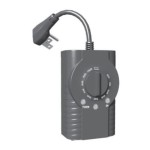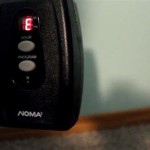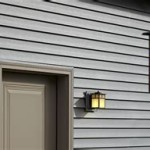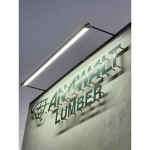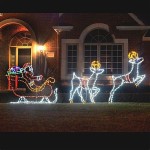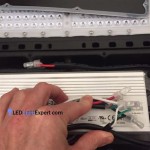HID Outdoor Lighting: Understanding Its Applications and Benefits
HID (High-Intensity Discharge) lighting has been a mainstay in outdoor lighting applications for decades. Known for its efficiency, durability, and long lifespan, HID technology remains a popular choice in various settings. This article delves into the nuances of HID outdoor lighting, exploring its applications, benefits, and considerations for choosing the appropriate type.
Applications of HID Outdoor Lighting
HID lighting finds its place in a wide range of outdoor environments, each requiring specific characteristics to meet the desired illumination needs. Some notable applications include:
- Street Lighting: HID lamps, particularly high-pressure sodium (HPS) lamps, have dominated street lighting for years. Their ability to provide bright, even illumination over large areas, combined with their longevity, makes them ideal for roadways, parking lots, and sidewalks.
- Sports Field Lighting: The high lumen output of HID lamps, particularly metal halide (MH) lamps, ensures ample light for sports fields, stadiums, and playing areas. Their ability to replicate daylight conditions enhances visibility and performance for athletes and spectators.
- Security Lighting: HID lighting's powerful illumination capabilities are essential for security applications. The bright light deters crime and illuminates areas of interest, aiding in surveillance and investigation.
- Industrial and Commercial Lighting: HID lighting is employed in various industrial and commercial settings, including factories, warehouses, and construction sites. Their efficiency and durability withstand tough environments and demanding work schedules.
Benefits of HID Outdoor Lighting
HID lighting's popularity stems from its numerous benefits:
- High Efficiency: Compared to traditional incandescent lighting, HID lamps consume less energy for the same level of illumination, resulting in lower energy bills and reduced environmental impact.
- Long Lifespan: HID lamps boast a significantly longer lifespan than incandescent lamps, typically lasting 10,000 to 20,000 hours. This reduces replacement costs and maintenance efforts.
- High Lumen Output: HID lamps provide a powerful and intense light output, making them ideal for illuminating large areas and ensuring good visibility.
- Durability: HID lamps are designed to withstand harsh weather conditions and vibrations, making them suitable for outdoor applications.
- Color Options: While HPS lamps emit a warm yellowish light, MH lamps offer a wider range of color temperatures, allowing for more customizable light settings.
Types of HID Lamps
Choosing the right type of HID lamp is crucial for achieving the desired illumination and meeting specific application requirements. The most common types of HID lamps include:
- High-Pressure Sodium (HPS): HPS lamps are renowned for their high efficiency and long lifespan. They emit a warm yellowish light, making them suitable for street lighting and parking lot applications.
- Metal Halide (MH): MH lamps offer a more neutral white light with a higher color rendering index (CRI) than HPS lamps. They are well-suited for sports field lighting, security lighting, and applications where color accuracy is important.
- Mercury Vapor (MV): MV lamps are less common today due to their lower efficiency and environmental concerns. They emit a bluish-white light and have a shorter lifespan than HPS or MH lamps.
The choice of HID lamp depends on factors such as the application's requirements, desired color temperature, and budget. Understanding the characteristics of each type allows for informed selection.
Considerations for HID Outdoor Lighting
While HID lighting offers many benefits, there are some considerations to keep in mind:
- Warm-up Time: HID lamps require a few minutes to reach full brightness after being switched on, which can present a challenge in situations requiring immediate illumination.
- Ballast Requirements: HID lamps need an appropriate ballast to regulate the electrical current and ensure proper operation. Selecting the correct ballast is essential for optimal performance.
- Lamp Disposal: HID lamps contain mercury, requiring proper disposal to minimize environmental impact. Recycling or discarding through designated channels is crucial.
- Light Pollution: The powerful light emitted by HID lamps can contribute to light pollution, impacting nocturnal ecosystems and astronomical observations.
The evolving landscape of lighting technology introduces new alternatives to HID lighting, such as LED (Light Emitting Diode) lamps. While HID technology remains a viable choice in many applications, understanding its limitations and exploring alternative options is essential for informed decision-making.

Hid Vs Led Lighting Light Bulb Finder

Super Bright 170lm W Led Retrofit Kit Replacing Hps Hid Agc Lighting

Hid Outdoor Lighting Hmostar

Hubbell Outdoor Lighting Mhs Y250p8 Miniliter V Compact Floodlight Fixture 1 Hid Metal Halide Lamp 250 W 120 208 240 277 Vac Broe Housing State Electric

400w Outdoor Hid Flood Light China Bulb Made In Com

History Of Hid High Intensity Discharge Lighting Shine Retrofits Blog

Led Parking Lot Lights For Outdoor Lighting Action Services Group

Improved Light Utilization Of Led Based Outdoor Lighting Facilities Scientific Diagram

Corepro Led Hid Hpl 7903997 Philips Lighting

Best Outdoor Lighting Bulbs Of 2024
Related Posts

